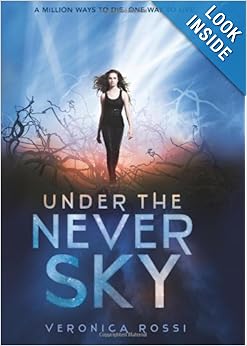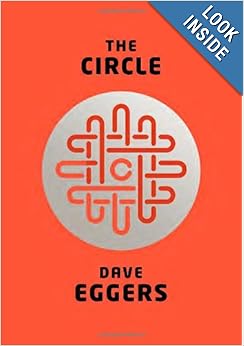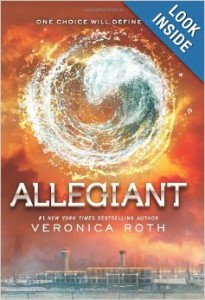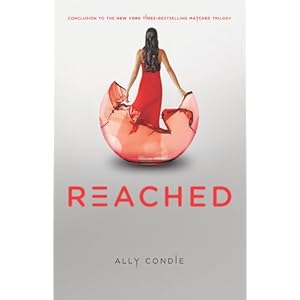Little Brother by Cory Doctorow.
For the Win by Cory Doctorow.
Pirate Cinema by Cory Doctorow.
Ready Player One by Ernest Cline.
OK, I made that genre name up all by myself. “Techno-thriller” and “genre-busting” are the terms I’ve most often seen applied to these novels. The thing I like about these books is definitely NOT the testosterone-fueled language, violence, and general boy-ness, but rather it seems that unlike many of us both inside and outside the gaming world, Mr. Doctorow and Mr. Cline have thought long and hard about the implications and trends in our technological culture, particularly those related to immersing ourselves in video games and internet alternate worlds. And the scenarios are not necessarily pretty, although the books cited above avoid an alarmist hatred of the virtual world while showing the possible dangers of our rush toward a world enmeshed in and enthralled by the virtual world of computers and computer gaming.
 Cory Doctorow is, according to Wikipedia, “a Canadian-British blogger, journalist, and science fiction author who serves as co-editor of the weblog Boing Boing.” He’s also the author of the first three books on the above list, and maybe the partial inspiration for the fourth. In Pirate Cinema, Doctorow’s latest (whoops, it looks as if he’s just released a sequel to Little Brother called Homeland, so not his latest), the language is rough and there is support for stealing and for recreational drug use. However, Doctorow’s insight into the underworld of hacker culture is still fascinating, even if I don’t agree with all of his hobbyhorse ideas. In the book sixteen year old Trent is obsessed with making movies on his computer. The problem is that he uses cuts from old movies to make his new, artistically reassembled, movies. And in this England of the near-future, this plagiarism or pirating of old movies is highly illegal and punishable by death. OK, not death, but near-death: loss of all internet privileges. Because he’s caused his entire family to lose access to the internet, access which has become indispensable to workers, students, and anyone else who wants healthcare or economic or government engagement, Trent leaves home and immerses himself in the underground London world of the homeless and the disenfranchised. He also meets the artists and activists who are trying to change the law to make his work and the art of others like him legal and socially acceptable. The message of the book is obvious and a bit heavy-handed: copyright law is bad and stifles artists. Whether you agree with that premise or not (I disagree mostly), Pirate Cinema will make you think about who owns what and why. In keeping with Doctorow’s copyright philosophy, Pirate Cinema is available at his website as a free download.
Cory Doctorow is, according to Wikipedia, “a Canadian-British blogger, journalist, and science fiction author who serves as co-editor of the weblog Boing Boing.” He’s also the author of the first three books on the above list, and maybe the partial inspiration for the fourth. In Pirate Cinema, Doctorow’s latest (whoops, it looks as if he’s just released a sequel to Little Brother called Homeland, so not his latest), the language is rough and there is support for stealing and for recreational drug use. However, Doctorow’s insight into the underworld of hacker culture is still fascinating, even if I don’t agree with all of his hobbyhorse ideas. In the book sixteen year old Trent is obsessed with making movies on his computer. The problem is that he uses cuts from old movies to make his new, artistically reassembled, movies. And in this England of the near-future, this plagiarism or pirating of old movies is highly illegal and punishable by death. OK, not death, but near-death: loss of all internet privileges. Because he’s caused his entire family to lose access to the internet, access which has become indispensable to workers, students, and anyone else who wants healthcare or economic or government engagement, Trent leaves home and immerses himself in the underground London world of the homeless and the disenfranchised. He also meets the artists and activists who are trying to change the law to make his work and the art of others like him legal and socially acceptable. The message of the book is obvious and a bit heavy-handed: copyright law is bad and stifles artists. Whether you agree with that premise or not (I disagree mostly), Pirate Cinema will make you think about who owns what and why. In keeping with Doctorow’s copyright philosophy, Pirate Cinema is available at his website as a free download.
 Ready Player One is obviously a tribute of sorts to Doctorow’s books and ideas. In fact, at one point Doctorow, along with actor Will Wheaton, are mentioned as minor characters in the book, two of the “good guys.” In the year 2044 Wade Watts escapes the poverty and hopelessness of the real world by spending most of his time plugged into the Oasis, a virtual world that has in some cases overtaken the real world. Wade goes to school in the Oasis, and after school he spends most of his waking hours looking for the answers to the riddle that Oasis creator James Halliday encoded into his virtual universe before he died. The person who solves Halliday’s puzzles, based on the pop culture of Halliday’s youth in the 1980’s, will win a fortune.
Ready Player One is obviously a tribute of sorts to Doctorow’s books and ideas. In fact, at one point Doctorow, along with actor Will Wheaton, are mentioned as minor characters in the book, two of the “good guys.” In the year 2044 Wade Watts escapes the poverty and hopelessness of the real world by spending most of his time plugged into the Oasis, a virtual world that has in some cases overtaken the real world. Wade goes to school in the Oasis, and after school he spends most of his waking hours looking for the answers to the riddle that Oasis creator James Halliday encoded into his virtual universe before he died. The person who solves Halliday’s puzzles, based on the pop culture of Halliday’s youth in the 1980’s, will win a fortune.
Unfortunately for me, I missed most of the 80’s. I was busy being a newlywed, graduate student, librarian, and then having babies. Pop culture in the 80’s passed me by, went over my head, and generally didn’t interest my twenty-something self. Now if you ask me about the 1970’s . . . Fortunately for me, some of the stuff Halliday used in his puzzle tribute/Easter egg that is embedded in the Oasis began in the 1970’s and extended into the eighties, so I knew about Star Wars, Back to the Future, PacMan, Dungeons and Dragons, and lots of other stuff from the book. Other eighties cultural memories that the book references were completely unknown to me. Ultimately, it didn’t matter. The story is great, and Wade is a likable, flawed, and engaging hero.
Geeky grown-up kids of the eighties (and seventies) and geeky kids that have grown up since then will all enjoy this tribute to our computer-driven culture that still manages to showcase some of the problems with our obsession with games and computers and virtual worlds and social media. I won’t spoil the ending, but Wade learns that real face-to-face relationships have their advantages. The book does contain positive references to homosexual behavior, and God is considered irrelevant throughout the book. The bad language is typical teenage boy-type stuff, but somewhat offensive.
I recommend both Cline’s book and those by Mr. Doctorow for those who are mature enough to sort out the ideas and philosophies contained in the futuristic worlds that the authors have created. Mr. Cline and Mr. Doctorow both raise questions worth thinking about in regard to our tech-permeated world, even if I don’t agree with all the “answers” they sometimes take for granted.
 A homeschooling mom friend recommended Under the Never Sky, the first in a futuristic, dystopian trilogy of YA novels about a place I wouldn’t want to visit In Real Life. Aria lives in Reverie, an enclosed pod-like city where everyone spends their time experiencing life in virtual reality “Realms”. When she visits the outside, the “Real”, Aria is in for a dangerous surprise and a journey that will both change her and show her true self.
A homeschooling mom friend recommended Under the Never Sky, the first in a futuristic, dystopian trilogy of YA novels about a place I wouldn’t want to visit In Real Life. Aria lives in Reverie, an enclosed pod-like city where everyone spends their time experiencing life in virtual reality “Realms”. When she visits the outside, the “Real”, Aria is in for a dangerous surprise and a journey that will both change her and show her true self.








